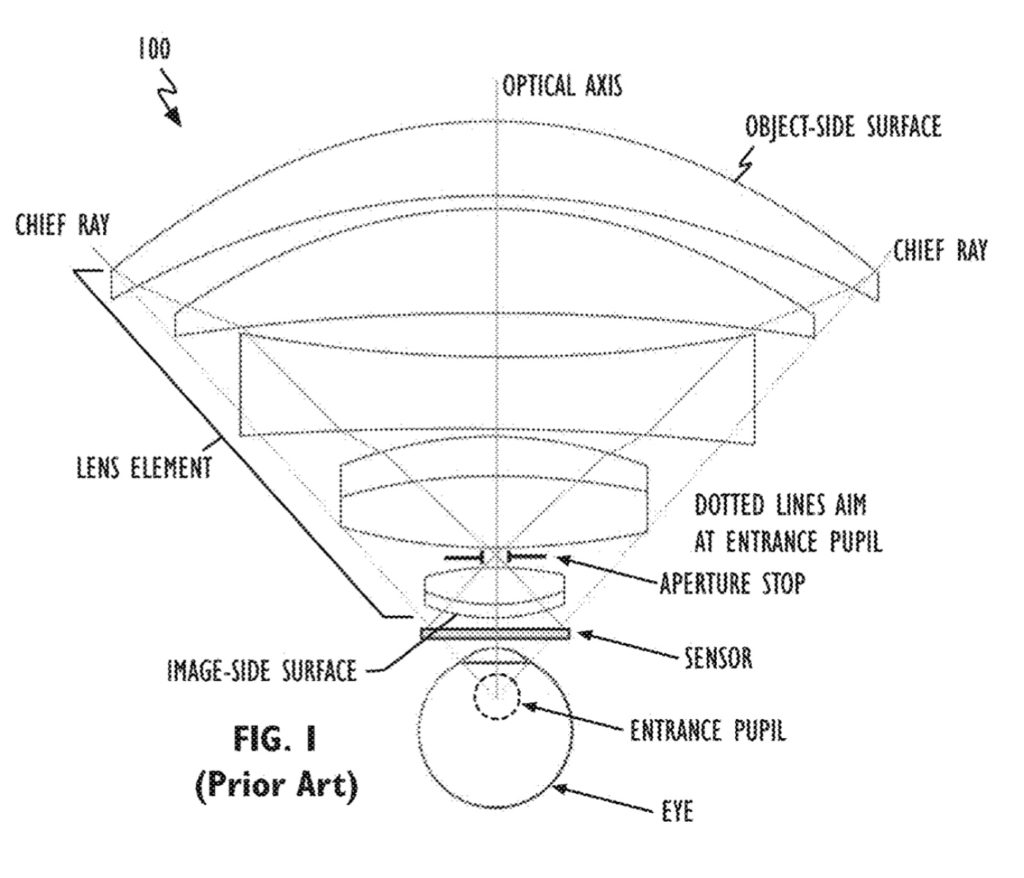Apple has applied for a patent (number 20220146820) for a “lens array for shifting perspective of an imaging system.” It involves the rumored “Apple Glasses,” an augmented reality/virtual reality head-mounted display (HDM).
About the patent filing
Augmented reality (AR) or mixed reality (MR) systems merge virtual imagery onto a view of the real world. In AR head-mounted devices (HMDs), virtual content is displayed with an image projection system located near the eye. Real-world content can either be viewed directly using an “optical see-through” lens design, or it can be rendered digitally using scene cameras for “video see-through.”
In the patent filing, Apple notes that current video see-through HMDs suffer from a shifted perspective of the real-world because the scene cameras are mounted anterior (in front of), superior (above), and/or lateral (to the side) of the user’s eyes. Scene cameras placed lateral to the eyes create a mismatch in Inter-pupillary distance (IPD) compared to the user’s eyes.
As a result, the user can suffer from double vision, blurred vision, dizziness, headache, nausea, and fatigue. This mismatch can also result in the incorrect perceived distance, and scale, of objects. Scene cameras placed superior or anterior to the eyes can create a perspective that translates with exaggeration to head movement, or incorrect motion parallax.
These effects can also cause the user discomfort. Apple wants to eliminate such issues with its Apple Glasses.
Summary of the patent filing
Here’s Apple’s abstract of the patent filing: “This disclosure describes a novel lens system having an entrance pupil at a location matching, or nearly matching, the eye’s optical system entrance pupil. The described lens system is significantly thinner than a single-aperture lens with matched entrance pupil and is achieved by using an array of camera elements.
Each camera element contains camera optics called “lenslets” and a sensor (e.g., an image or depth sensor), where a lenslet can include one or more lens elements (e.g., a compound lens). Individual camera elements can be arranged such that THEIR optical axes intersect at, or near, the eye’s entrance pupil location. In addition, each camera element’s field-of-view (FOV) corresponds to a small sector of a large FOV. The FOVs of adjacent camera elements can be non- or slightly-overlapping so that a wide-angle image can be formed by concatenation of the individual camera element images.”
About Apple Glasses
When it comes to Apple Glasses, such a device will arrive in late 2022 or 2023, depending on which rumor you believe. It will be a head-mounted display. Or may have a design like “normal” glasses. Or it may be eventually be available in both. The Apple Glasses may or may not have to be tethered to an iPhone to work. Other rumors say that Apple Glasses could have a custom-build Apple chip and a dedicated operating system dubbed “rOS” for “reality operating system.”
Article provided with permission from AppleWorld.Today

